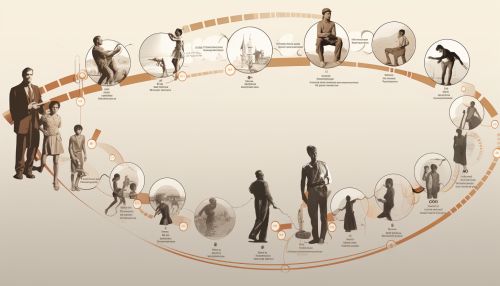Eugenics
History of Eugenics
Eugenics is a set of beliefs and practices aimed at improving the genetic quality of the human population. The concept has a long history, tracing its roots back to the ancient Greeks, who practiced selective breeding in an attempt to enhance the physical and intellectual attributes of their offspring. However, it wasn't until the late 19th century that the term "eugenics" was coined by Francis Galton, a British scientist and cousin of Charles Darwin.


The early 20th century saw the rise of eugenics as a popular movement, particularly in the United States and Europe. This was largely driven by the work of prominent eugenicists such as Charles Davenport and Harry H. Laughlin, who advocated for policies such as compulsory sterilization and immigration restrictions to prevent the "degeneration" of the human race.
Eugenics and Genetics
The science of eugenics is closely linked to the field of genetics. Early eugenicists often used Mendelian genetics - the principles of heredity proposed by Gregor Mendel - to justify their beliefs and practices. However, their understanding of genetics was rudimentary at best, and their theories often lacked scientific rigor.
In the mid-20th century, advances in genetic research led to a greater understanding of the complexity of human heredity. This undermined many of the simplistic assumptions of early eugenicists, and led to a decline in the popularity of eugenic ideologies.
Ethical Considerations
Eugenics raises a host of ethical issues, many of which are still debated today. These include questions about the morality of manipulating human reproduction, the potential for abuse of power, and the impact on societal attitudes towards disability and difference.


The history of eugenics is also fraught with instances of coercion and human rights abuses. In the United States, for example, tens of thousands of people were forcibly sterilized under eugenic laws in the early 20th century. Similarly, the eugenics movement in Nazi Germany led to the systematic murder of millions of people deemed "genetically inferior".
Modern Perspectives on Eugenics
In the modern era, eugenics is generally viewed with skepticism and caution. While some aspects of the eugenics movement, such as the promotion of healthy lifestyles and genetic screening, have been incorporated into mainstream medicine, the idea of manipulating human genetics to improve the species is largely rejected.
However, advances in genetic technology, such as gene editing and preimplantation genetic diagnosis, have reignited debates about the potential for a new form of eugenics. These technologies offer the possibility of preventing or curing genetic diseases, but also raise concerns about the potential for misuse and the creation of a "genetic underclass".
